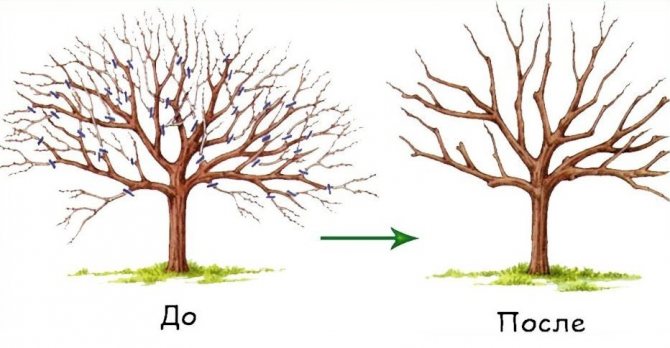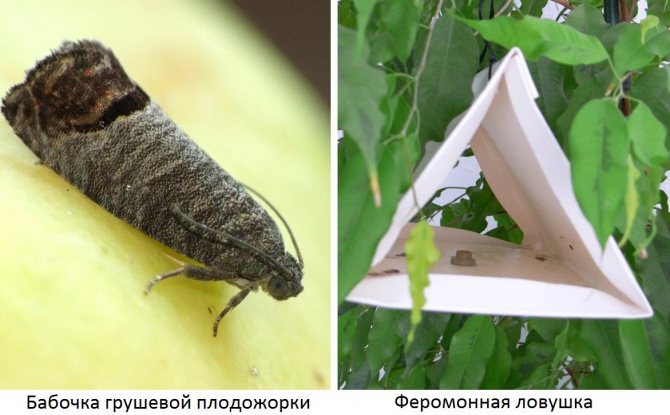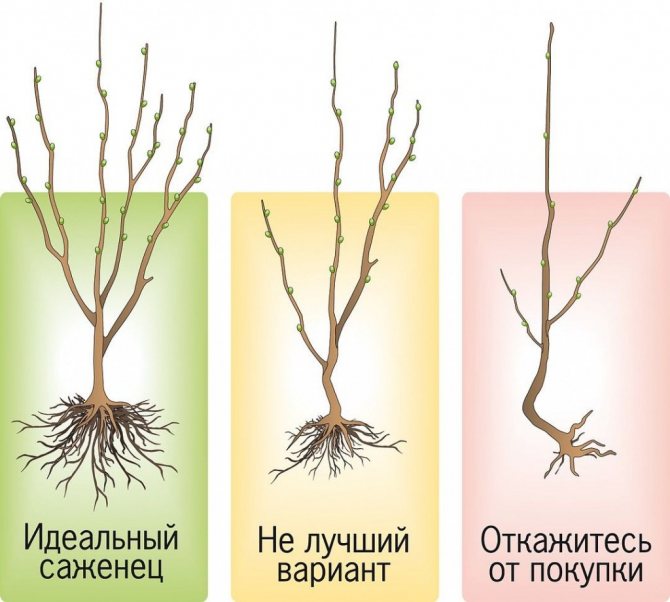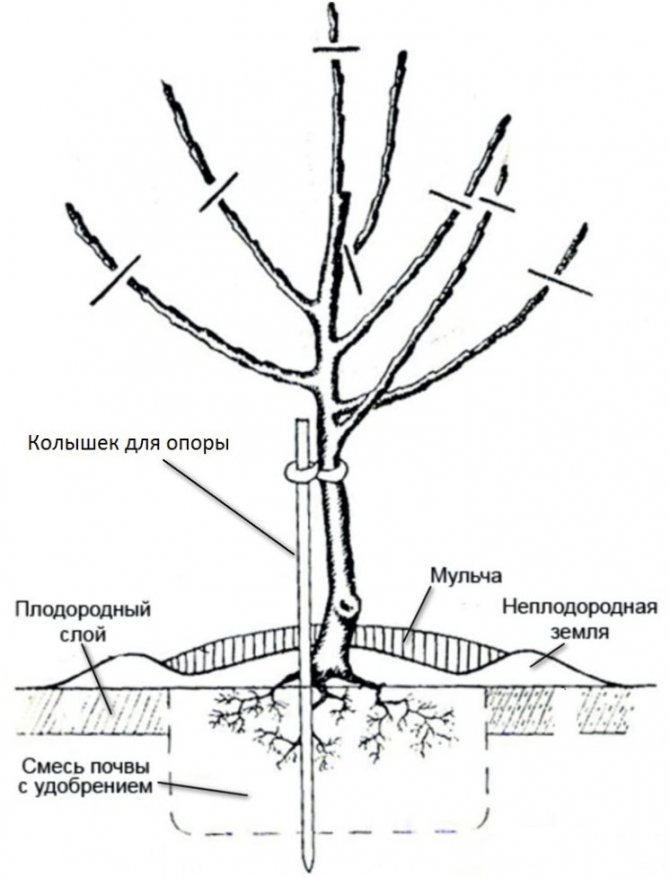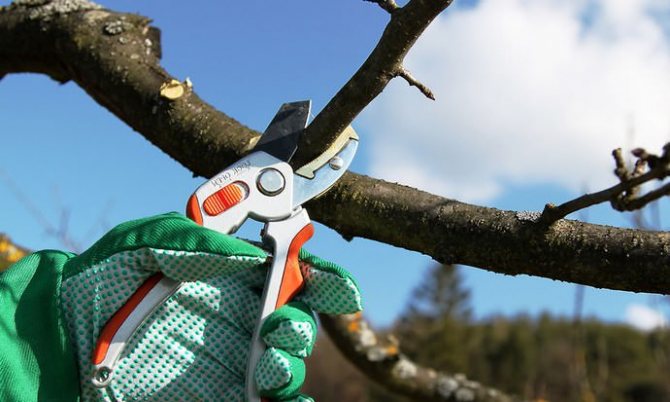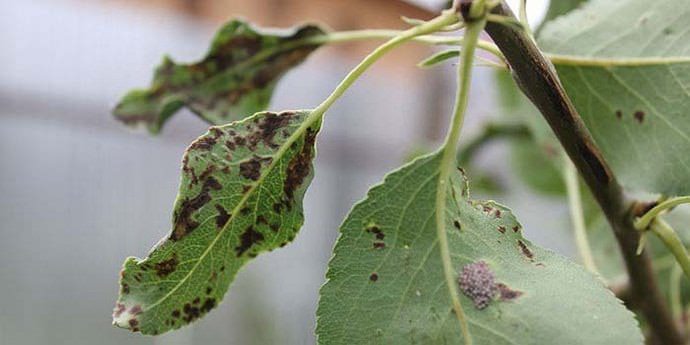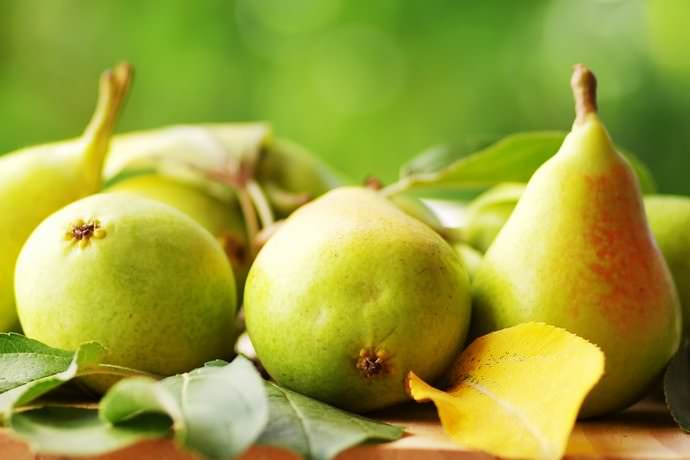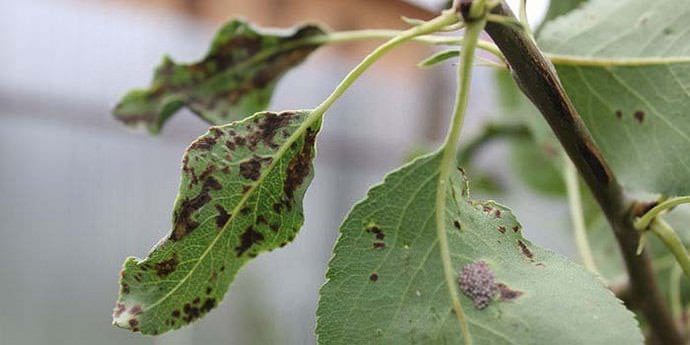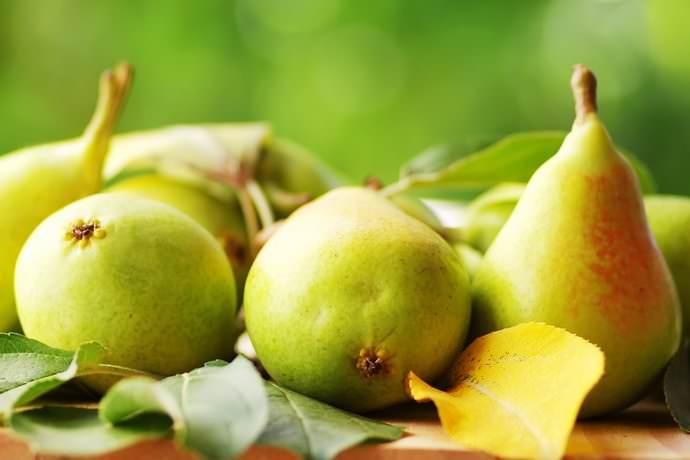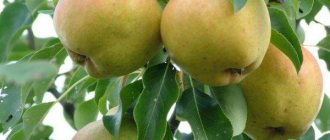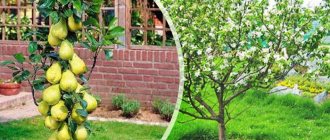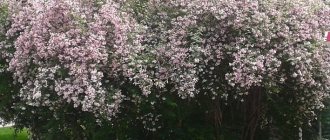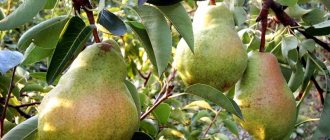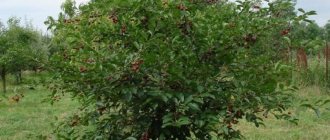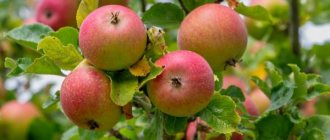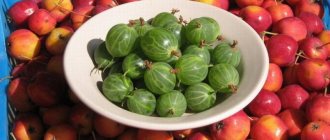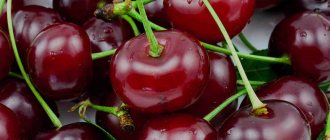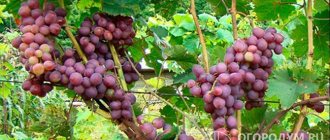Pear is a rare guest in Siberian gardens. This can be explained by several reasons: firstly, the tree is notable for its low winter hardiness and not early maturity, and secondly, in regions with cool summers, the harvest can not be expected at all. But do not think that it is impossible to grow fragrant and sweet fruits in Siberia! Today we will talk about what varieties of pears to choose for Siberia, consider the features of caring for them and talk about the most common mistakes of novice gardeners!

Perun
This variety fits perfectly even in harsh climatic conditions. He was bred in the Barnaul experimental gardens of the All-Russian Research Institute of Horticulture in Siberia. For creation, breeders used the winter variety Decanka and hybrid variety No. 10821, whose “parents” were Bergamotnaya and Granddaughter pears. Despite its name, this pear variety for Siberia has nothing to do with Slavic mythology and the god of thunder. It's just that I.A.Puchkin, who led a group of breeders, was fond of the religion and history of the Slavs. Such a reverent attitude towards ancient legends resulted in the names of the varieties bred by the scientist.
The pear tree of this variety is medium-sized, the crown is spreading, rounded. Leaves are smooth, deep green. The mass of Perun pears can reach 145 g. By the way, the fruits are unequal, their skin is tender, oily. The flesh of the fruit is not very dense, white. The taste is pleasant, sweet and sour. Pears ripen in mid-October. They are suitable both for fresh consumption and for making marmalade, preserves, compote and jelly. Pear fruits can be stored in the refrigerator - they will not lose their taste until January!
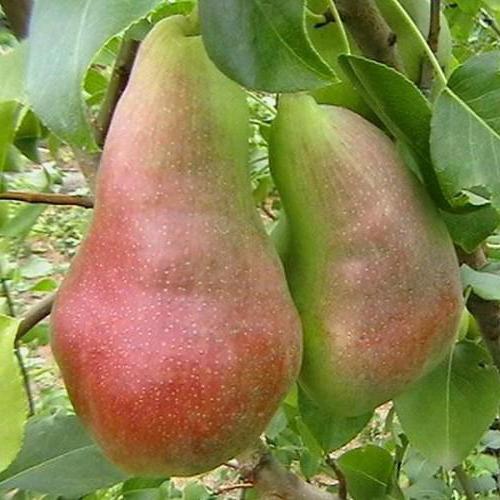

Among the advantages of the Perun variety, one can note its resistance to fungal diseases. Many pests are not afraid of him. But rodents can spoil the pear. To protect the tree, you need to wrap the stem and skeletal branches with dense improvised material.
Generic inheritance
Variety "Svarog" was created by crossing, differing winter hardiness, Ussuri pear and "Bere Bosk" - an old French variety late ripening.
What the parents gave to the new hybrid form:
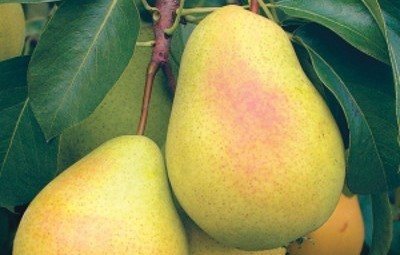

- from the variety "Bere Bosk" - inherited resistance to scab and other fungal diseases; commercial attractiveness of fruits and their taste originality; an increase in productivity during the growing process of a plant; undemanding to the composition of soils with sufficient watering;
- from the Ussuri pear - the ability to variability in the process of clone selection; exceptional frost resistance; drought tolerance; undemanding to the composition of soils.
True, the fruits of this decorative variety are unpleasant in taste and are small in size, and they will have to wait 20 years after planting the seedling.
Reference: The abundance of fiber in pear fruits helps to eliminate harmful cholesterol from the human body. The astringent taste of most domestic varieties is due to tannins - natural means of preventing salt deposition. Taste buds easily identify stony cells in the pulp of a pear - its supporting tissue. In wild varieties, the presence of these cells is more pronounced, which creates a crunch when biting the fruit.
Care rules
Pear Perun does not like drafts, near-passing groundwater. But the main thing is that the tree must receive a sufficient amount of sunlight! This variety has special requirements for the soil. The best option is black soil, loam or sandy loam soil.
In the first year after planting, the Perun pear grows slowly, and therefore does not need pruning. Starting from the third year, it is necessary to regularly prune the fruit tree, removing dry and diseased branches. The trim angle must be right. Gardeners recommend rejuvenating the pear from the bottom up. After the process is completed, the cuts should be processed with garden pitch - you can buy it in a specialized store, or you can do it yourself. You can replace garden var with oil-based paint.
Gardeners reviews
Description of pear "Lel" is quite common, and, according to gardeners, the variety has a large number of positive characteristics. The fruits ripen completely at the end of the second decade of August. The harvested crop can be stored for no more than a week and the fruits can be used universally.
This variety has established itself as very demanding for a sufficient amount of moisture. Flowering is observed somewhat later than most of the zoned varieties. The variety begins fruiting in the fourth year after planting in a permanent place. The yield is quite high, and the fruiting is very regular. The disadvantages of the variety include not very good keeping quality and transportability of the harvested crop.
Svarog
Another variety tested by Siberia is the Svarog pear. Like the Perun variety, Svarog was bred by a group of breeders led by I.A.Puchkov at the Scientific Research Institute of Horticulture in Siberia.
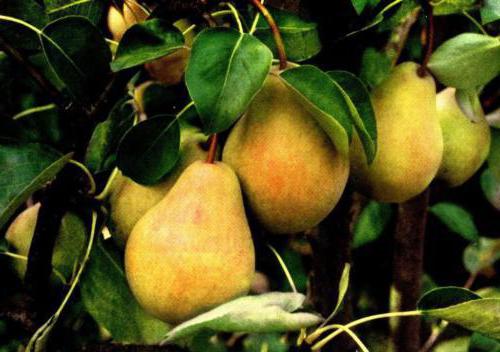

The Svarog variety has many advantages:
- it easily tolerates frosts down to -30 ° С;
- the variety is resistant to pathogenic fungi;
- the fruits have time to ripen before the first cold weather;
- pears can be stored for about three months.
But not everything is so rosy! If you do not follow the rules for caring for the Svarog pear, the tree may stop bearing fruit or die!
The appearance of this variety depends on the place of growth and the composition of the soil. So, the leaves of a pear can have a willow, scaly shape, or even resemble birch leaves. The bark of this pear variety for Siberia is brown, flaky. The weight of the fruit is usually about 80 g, the skin is rough and dull. Full ripening of the fruits occurs at the beginning of October. The pulp is juicy and creamy.
Appearance
Consider separately the appearance of the tree and the fruit.
Wood
The trees of the Lel variety are medium-sized, reaching a height of 4-6 meters. The crown is of medium density with excellent foliage. It has the shape of an ellipse.
Most often, fruit formations are tied on small and elongated fruit twigs. Sometimes - on stem ringlets and formed spears. Flowering in time is later - in early June.
Curved shoots, burgundy-brown shade. They have a little hairiness at the ends. Leaves are miniature, oval, pale, emerald hue. The leaf blade is embossed, strongly curved.
Pears are miniature, smaller than average in size. In weight, they reach no more than 60-80 grams. With good tree care, sometimes relatively large pears up to 100 grams are found. Fruits are wide, regular pear-shaped.
The skin is smooth, endowed with a glossy sheen. The peduncles are small, curved in shape. At harvest time, the main color is emerald.
When fully ripe, the fruits become emerald-amber. The cover shade is striped, weakly expressed, spread over 1/6 of the fruit.
Has a beautiful burgundy blush. There are numerous subcutaneous freckles. They have an emerald hue. They are miniature in size, well visible on fruits. The saucer is spacious, ribbed, not very deep.
We suggest that you familiarize yourself with: Overseeding the lawn: how to overseeding the lawn (instructions), the choice of seeds
The cup is of a closed type, does not fall off. The funnel is absent or very weakly developed. The heart is small, elliptical in shape. The seed chambers do not fall, they are endowed with a closed form.
The sub-cup tube is saccular, elongated. Seeds are ordinary, oval, brown in color. The pulp is semi-oily, snow-white, pleasant, light. Has a sweet dessert aftertaste with a slight sourness and a delicate spicy aroma.
How to plant and care?
The first thing to pay attention to is the choice of location. It is best to plant the Svarog pear on a warm, wind-protected area. Gardeners recommend giving preference to seedlings with a developed root system. Remove damaged roots before planting. It is very important to prepare a support peg to which the trunk of the young tree will be attached!
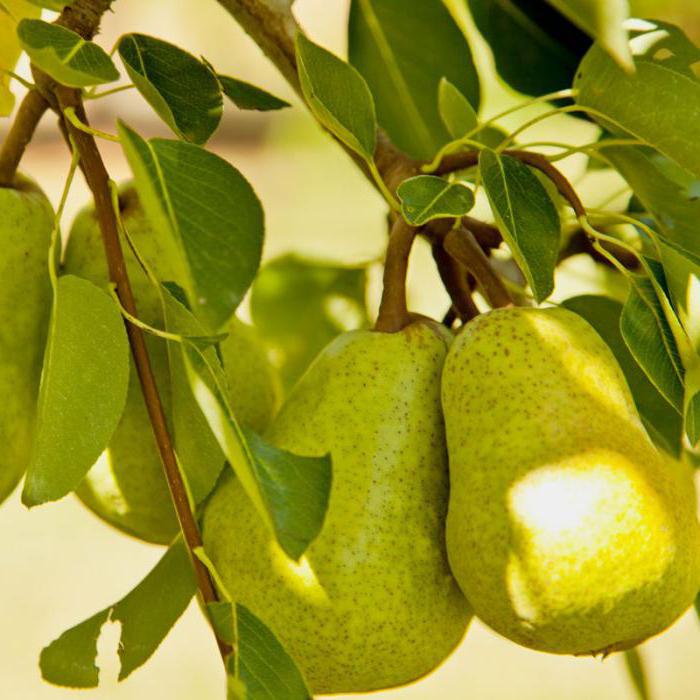

It is necessary to fertilize the pear annually. Organic and phosphorus-potassium compounds are suitable as top dressing.
Bacteriosis pear of this variety is practically not terrible. However, it is susceptible to attack by pests. The solution "Karbofos" will help from the common aphid. Nitrofen will help protect the tree from the weevil beetle. In this case, it is important to burn the affected leaves - in them the weevil organizes the clutches.
Landing rules
First you need to prepare a planting hole. It is being prepared several weeks before the intended landing. This is necessary in order for the surface layer of the soil to settle. A small (40 cm long) peg must be driven into the hole, which will act as a support for the plant.
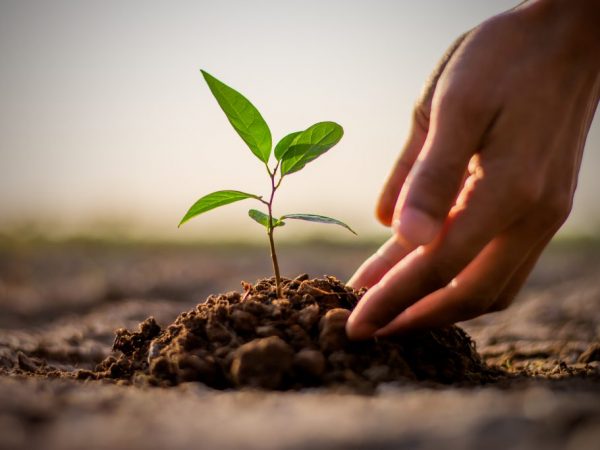

The planting pit is prepared a few weeks before the intended planting
Before lowering the seedling into the ground, you need to evenly distribute the root system around the entire perimeter of the pit. When planting, it is important to pay attention to the fact that the root collar must necessarily be above the ground.
If you sprinkle it with earth, then soon it will begin to rot. As a result, the plant will die completely. The seedling should be filled up carefully so as not to damage the roots. After filling up the earth, the embankment is well compacted and watered with 20 liters of warm water.
Pear varieties Lel: description of care
Getting a high-quality harvest depends on adherence to all growing technologies and timely measures related to the fight against diseases and pests. This variety is afraid of black cancer, stem rot, rust, powdery mildew, manilia. Damage to the pear and plant parasites - pear mite, moth, green aphid.


Preventive measures will help preserve the plant. For example, three times a season it is necessary to spray a pear: the first treatment with Kinmix is carried out in the spring, after the tree wakes up, Lel pear should be treated with Agravertin before flowering, and when ovaries appear on the tree, it is recommended to use Iskra.
Good protection against pests and diseases - non-chemical agents. You can spray all varieties of pears for Siberia with dandelion broths, to which garlic and laundry soap are added. Every fall, the pear tree needs sanitary pruning and removal of the remaining leaves. This will prevent the spread of insects and disease.
In early spring, experienced gardeners recommend whitewashing the trunks. This will protect the bark from sunburn. In addition, this method will allow to destroy some of the parasites hibernating under the bark.
Severyanka
One of the most popular varieties grown in Siberia is the Severyanka pear. The characteristics include earlier fruiting, high productivity and winter hardiness. This variety was received by the famous breeder P.N. Yakovlev. Parental pair - pears Koperechka No. 12 and Favorite Klappa.It was from them that Severyanka inherited a dense creamy pulp, a delicate aroma and an impatient sour taste. Fruits are stored for a short time - about two weeks.
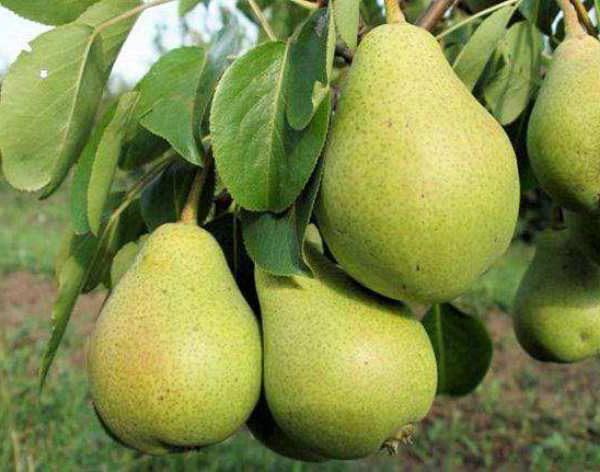

This variety can be classified as one of the most winter-hardy. For example, in Ufa, a case was recorded when, when the temperature fell to -50 ° C, only young pears of the Severyanka variety were frozen. It is also known that with a prolonged decrease in temperature to -42 ° C, the aboveground part of the trees died, but the plant quickly recovered.
Care features
Experienced gardeners assure that about 100 kg of juicy fruits can be harvested from one tree! To do this, you need to provide Severyanka with proper care. When choosing a planting site, it is best to stay in a sunny area, protected from drafts. Humus and manure should be laid out at the bottom of the planting pit.
The first pruning is done immediately after the pear has been planted. In the event that there are no skeletal branches, the only shoot is worth cutting. It is best to do this at a height of about 80 cm above the ground, keeping at least three developed buds. To prevent the young plant from dying, in the first two or three years it is necessary to insulate it for the winter.
The first fertilization should be carried out in the second year of the Severyanka's life. This pear variety for Siberia loves moisture, and therefore it must be watered several times a season.
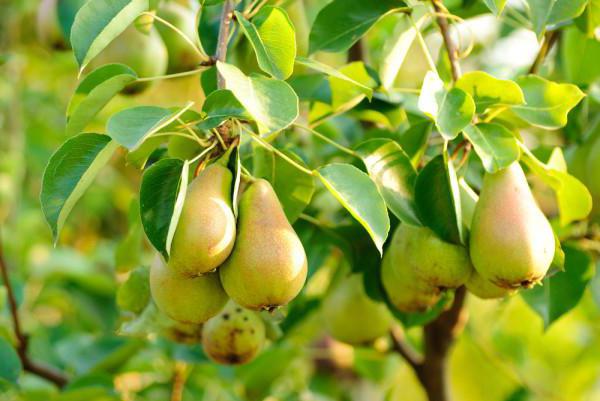

The pear tree is practically not susceptible to diseases, but it can be affected by pests - the pear leaf gall midge and the hawthorn butterfly. This will help both chemicals and folk recipes. You can spray the plant with an infusion of wormwood, makhorka and garlic. It is simple to make it: you need to mix 200 g of crushed components, pour boiling water over them (five liters is enough). Then it is necessary to additionally boil the composition for 1.5 hours. The resulting "medicine" must be diluted with 15 liters of water, to which you can add 300 g of laundry soap.

